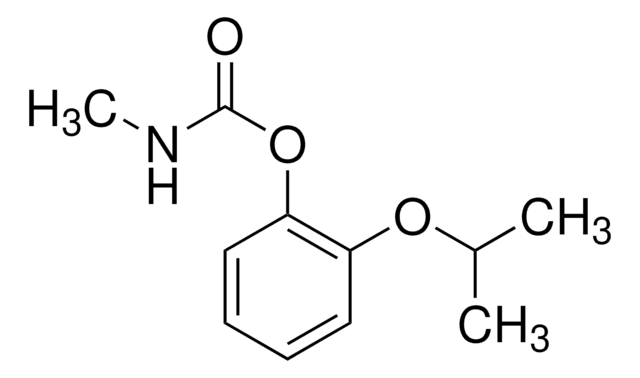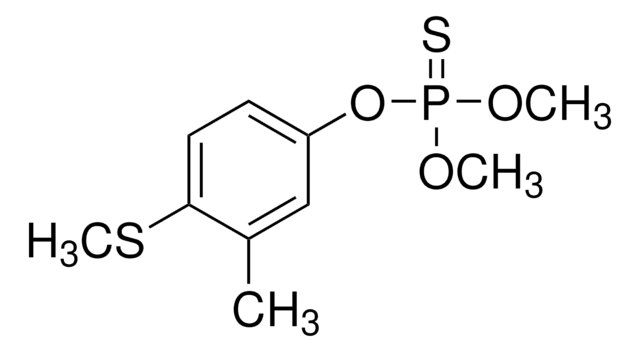46046
α-tert-Butyl-β-(4-chlorobenzyl)-1H-1,2,4-triazole-1-ethanol
PESTANAL®, analytical standard
Synonyme(s) :
Paclobutrazol
About This Item
Produits recommandés
Qualité
analytical standard
Niveau de qualité
Description
mixture of stereo isomers
Gamme de produits
PESTANAL®
Durée de conservation
limited shelf life, expiry date on the label
Technique(s)
HPLC: suitable
gas chromatography (GC): suitable
Application(s)
agriculture
Format
neat
Chaîne SMILES
OC(C(C)(C)C)C(N1N=CN=C1)CC2=CC=C(Cl)C=C2
Vous recherchez des produits similaires ? Visite Guide de comparaison des produits
Description générale
Application
- Apple juice samples by matrix solid-phase dispersion (MSPD) and gas chromatography-mass selective detection (GC-MSD) with electron impact (EI) ionization.
- Processed fruits and vegetables by miniaturized extraction-partition and liquid chromatography-electrospray tandem mass spectrometry (LC-ESI-MS/MS) equipped with multiple reaction monitoring (MRM) detection.
- Crops and soya grains by LC-ESI-MS/MS with MRM detection.
Informations légales
Mention d'avertissement
Danger
Mentions de danger
Classification des risques
Acute Tox. 4 Inhalation - Acute Tox. 4 Oral - Aquatic Acute 1 - Aquatic Chronic 1 - Eye Irrit. 2 - Flam. Sol. 1 - Repr. 2
Code de la classe de stockage
4.1B - Flammable solid hazardous materials
Classe de danger pour l'eau (WGK)
WGK 3
Point d'éclair (°F)
Not applicable
Point d'éclair (°C)
Not applicable
Équipement de protection individuelle
dust mask type N95 (US), Eyeshields, Gloves
Choose from one of the most recent versions:
Déjà en possession de ce produit ?
Retrouvez la documentation relative aux produits que vous avez récemment achetés dans la Bibliothèque de documents.
Les clients ont également consulté
Notre équipe de scientifiques dispose d'une expérience dans tous les secteurs de la recherche, notamment en sciences de la vie, science des matériaux, synthèse chimique, chromatographie, analyse et dans de nombreux autres domaines..
Contacter notre Service technique



















